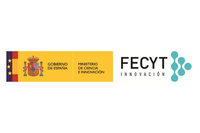100&CIA for Vitoria-Gasteiz
from 01/01/2020 until 30/06/2020
It was created in 2013 by the Environmental Research Center of Vitoria-Gasteiz city council and organized by Ataria, The Interpretation Centre of the Salburua Wetlands. 100&CIA is a Citizens-Science based project, it is supported by a group of volunteers that are heterogenous in their knowledge and capabilities but all share a strong commitment for the conservation and the study of our biodiversity. The participants are in charge of the data gathering and uploading the results and they do so by sampling some faunistic and floristic groups (depending on the Conservation Program) in and at the surroundings of the city. This task would otherwise be impossible to carry out due to the large field effort required. Currently, there are seven Conservation Programs (the year of creation): orchids (2013), urban birds (2014), dragonflies (2014), butterflies (2015), moths (2016), soils (2018) and night predatory birds (2020). There is a coordinator for each of the Conservation Program, the coordinator is an expert in that field and helps participants with any doubt on identifications and sampling methods. Finally, the coordinator elaborates an annual memory based on the collected data yielding a series of recommendations for the conservation of the studied groups. All memories are available for free consult at the official web page of the project.
Aim
100&CIA for Vitoria-Gasteiz aims to bring together the conservation of the natural heritage of the municipality and the awareness on biodiversity conservation of the general public by actively involving citizens in conservation projects, mainly by data gathering. The main objective of this project is to gather information about the biodiversity of the municipality of Vitoria-Gasteiz (Spain) helping to make the correct decisions towards its conservation while increasing the awareness of the citizenship on environmental issues. There are four specific objectives: -Binging citizens closer to research activity by involving them on the study of the biodiversity of their area, particularly in data collection. -Increasing our knowledge on the studied taxonomic groups, gathering information about the species present at our municipality, their distribution and important factors for their conservation. -Linking the city’s biodiversity-rich surroundings with citizens increasing their knowledge and promoting their interest in conserving it. -Involving the youngest citizens in nature conservation activities.
Needed equipment
You will need: -a pencil -a pair of binoculars -a camera or an smartphone for recording your observations and -some motivation. That’s all you need!
Created June 21, 2021, 3:35 p.m.
Updated Dec. 13, 2021, 12:39 p.m.
